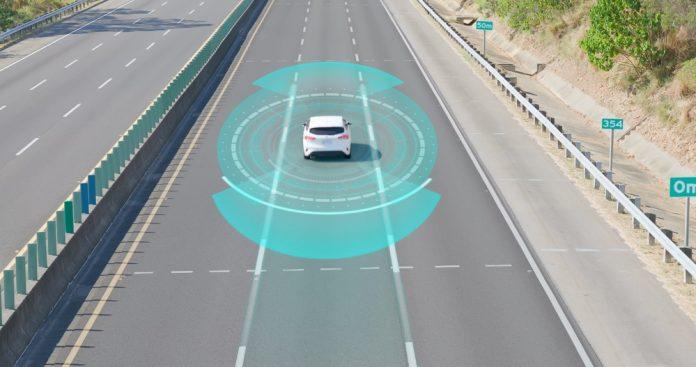The Faroe Islands have taken a bold step to address the challenges of overtourism by introducing self-navigating cars for visitors. This innovative move aims to streamline traffic flow, reduce congestion, and enhance the overall travel experience in the remote North Atlantic archipelago. As one of the fastest-growing tourist destinations in recent years, the Faroe Islands are leveraging cutting-edge autonomous vehicle technology to balance increased visitor numbers with the preservation of their fragile environment and local way of life.
Faroe Islands Deploy Autonomous Vehicles to Alleviate Tourist Congestion
In a groundbreaking move to tackle the challenges posed by skyrocketing visitor numbers, the Faroe Islands have rolled out a fleet of autonomous vehicles designed specifically to enhance the tourist experience while protecting the delicate natural environment. These self-driving cars are equipped with advanced AI navigation systems that optimize routes in real-time, reducing traffic bottlenecks in popular hotspots such as Tórshavn and the picturesque village of Gásadalur. This initiative not only ensures smoother travel flows but also allows visitors to explore lesser-known areas, distributing tourist traffic more evenly across the archipelago.
The autonomous cars come with a suite of smart features that prioritize sustainability and safety:
- Eco-friendly electric powertrains minimizing emissions
- Integrated language support for seamless user interaction
- Real-time congestion alerts directing cars to alternate scenic routes
- Automated parking assistance in designated zones to prevent overcrowding
Early pilot tests showed a 35% reduction in peak-hour congestion and a significant increase in visits to off-the-beaten-path attractions, promising a more balanced and sustainable tourism model for the future.
| Feature | Benefit | Impact |
|---|---|---|
| AI Route Optimization | Reduces travel delays | 35% less congestion |
| Electric Powertrain | Zero-emission travel | Improved air quality |
| Language Support | Multilingual user interface | Accessible for global visitors |
Inside the Technology Steering Sustainable Travel in Remote Destinations
The Faroe Islands are pioneering a groundbreaking approach to sustainable travel with the deployment of self-navigating cars tailored specifically for remote and environmentally sensitive areas. These vehicles use advanced AI and sensor technologies to ensure smooth traffic flow, minimize environmental impact, and reduce human error on narrow island roads. Beyond improving safety, the autonomous cars are programmed to prioritize routes that avoid overcrowded landmarks, effectively distributing visitors more evenly across the archipelago. This smart routing system not only protects fragile ecosystems but also enhances the overall tourist experience by reducing congestion.
Local authorities have partnered with tech innovators to develop a dynamic control center where data from these self-driving cars is continuously monitored and analyzed. This real-time information helps optimize battery usage, track emissions, and forecast visitor density hotspots. Below is an overview of key sustainability benefits these vehicles contribute to the islands’ mission:
- Reduced Carbon Footprint: Electric-powered with regenerative braking systems
- Optimized Traffic Flow: AI navigates tourists away from overcrowded routes
- Enhanced Safety Measures: Collision avoidance tailored to rugged terrain
- Visitor Experience: Personalized itineraries based on dynamic environmental data
| Feature | Benefit | Impact |
|---|---|---|
| AI Routing System | Balanced traffic distribution | 50% reduction in overcrowding |
| Electric Powertrain | Zero tailpipe emissions | 80% decrease in local pollution |
| Real-Time Data Monitoring | Adaptive travel planning | Improved visitor satisfaction scores |
Experts Advise Integrating Self-Navigating Cars with Local Infrastructure for Optimal Impact
Industry specialists emphasize that merely deploying self-navigating vehicles in the Faroe Islands isn’t enough to fully address overtourism challenges. To unlock the full potential of autonomous technology, a careful synchronization with existing local infrastructure is essential. This integration involves upgrading roadways with smart sensors, implementing dynamic traffic signals, and enhancing digital communication networks to enable seamless vehicle-to-infrastructure (V2I) interaction.
Experts highlight several critical elements to prioritize, including:
- Real-time traffic management-leveraging data analytics to prevent congestion hotspots;
- Adaptive route planning-guiding vehicles along less crowded paths to protect vulnerable areas;
- Infrastructure scalability-ensuring that roads, charging stations, and signage evolve alongside vehicle capabilities;
- Environmental impact monitoring-utilizing integrated sensors to track emissions and road wear proactively.
| Area | Key Integration Focus | Expected Benefit |
|---|---|---|
| Road Networks | Smart Sensors & Signage | Improved Traffic Flow |
| Charging Stations | Location Optimization | Reduced Vehicle Downtime |
| Communication Systems | V2I Protocols | Enhanced Safety |
Final Thoughts
As the Faroe Islands embark on this innovative journey with self-navigating cars, the move signals a promising step toward sustainable tourism and enhanced visitor experience. By leveraging technology to manage the flow of travelers, the archipelago aims to preserve its pristine environment while accommodating growing interest. As other destinations grapple with the challenges of overtourism, the Faroes’ pioneering approach could serve as a model for balancing accessibility with conservation in the years ahead.
















